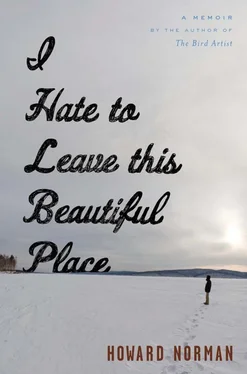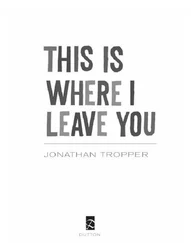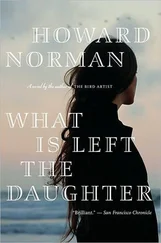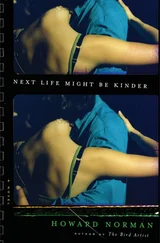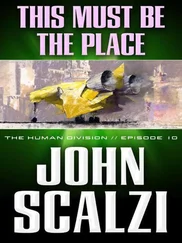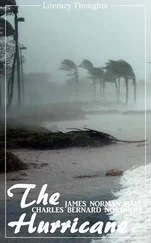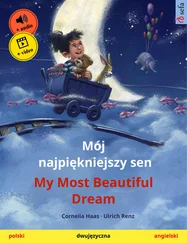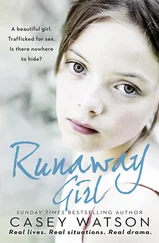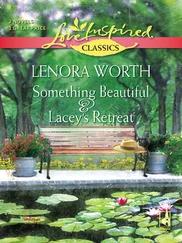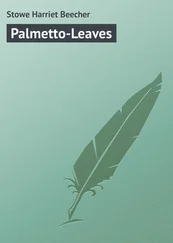I watched this until most of the daylight was out over the sea and the cliffs threw shadows on the beach, and then I set out for the trail back up to the gravel parking lot. At the top of the rise, when I turned to look back, there was just enough light to see that many gulls were taloned to the dolphin, wildly flapping their wings as if trying to carry it away to a secret lair for the night. Their squalls and cries echoed up the beach as the photographer packed up her equipment and lit a cigarette.
I drove back to the Olema Inn, seeing a bobcat scatter across the road into the tall, dry grass and weeds, and hawks perched on fence posts as the night came on fully. I had a mango salad at the inn’s restaurant, then sat in jeans, T-shirt, light sweater, and loafers on the side porch, drinking a glass of wine, watching swallows and the occasional bat zigzag and careen after insects. In the cooling night air the fragrance of a nearby stand of eucalyptus was deeply — and familiarly — stirring, and I felt gratified that the day had gone as it had. Then, at around eight-thirty, a rattletrap 1960s Volvo, with two hubcaps missing and a faulty muffler, pulled into the parking area, and when its driver crouched out I saw that it was the photographer. She carried her tripod camera and a leather satchel, her boots slung around her neck, and she was barefoot. When she stepped up to the porch I said, “You were with that dolphin, weren’t you?”
“Oh, that was you,” she said. “Yeah, I noticed somebody up the beach. I was annoyed. I prefer to be out there alone. I’m usually out there alone.”
“Join the club.”
She reached out her hand for me to shake and said, “I’m Halley, last name’s spelled S-h-a-g-r-a-n — pronounced chagrin. ”
I laughed and introduced myself. “Does your last name explain why you’re drawn to sad sights like that dolphin?”
“Wow, that’s pretty funny,” she said. “And pretty personal. But you know what? That dolphin was definitely not a sad sight for me.”
“How so?”
“Because death happens in nature and I like to take pictures of it. The way I look at it, the beaches are always full of such news — natural-history news, I call it. The dolphin was like an obituary from the sea. There’s hundreds a day.”
“Interesting how you put things.”
“Interesting or not, that’s my thinking. Know what else? I don’t mind calling myself a nature photographer. I don’t mind if somebody buys a photograph of mine because they enjoy nature. That’s cool. Life for me has a spiritual affirmation and so does death. That was quite an earful, huh?”
“I’d like to see some of your work.”
“I only use black-and-white film. And you know what? — and I can’t verify this — I only dream in black and white, I’m pretty sure. My husband, Sonam, says that in a past life I was colorblind. He tends to say stuff like that. He’s a Buddhist. I mean a Tibetan Buddhist. I mean a born-and-raised-in-Tibet Buddhist.”
“Did you meet in Tibet?”
Halley sat on the bench beside me; an acrid whiff of what had to be the dolphin snapped in my nostrils, and when Halley noticed me noticing this, she said, “Yeah, well, I was just going up for a bath. But to answer your question, no, we didn’t meet in Tibet. But we got married there. No, I’d been teaching a introduction to photography class on the UC Berkeley campus. Sonam was late for a lecture he was giving in physiology, he’d got lost trying to find the lecture room, and he wandered in. I was in the darkroom, and one of my students sent him in to get directions from me, but I didn’t know where his lecture room was either. He had the wrong part of campus, I told him that much. But that’s how we first met. After that he came to the darkroom, like, twenty days in a row or something.”
“Thanks for telling me. It’s a good story.”
“Sonam and I live in Mendocino, but I’m photographing here at Point Reyes so often, it’s sort of a home away from home. My husband has a medical practice that keeps him very busy.”
“What kind of medicine does he practice?”
“Regular old general practitioner, though I guess that’s kinda rare these days, huh? He went to medical school in London. A lot of people hear that my husband’s Tibetan and right away they figure he’s into some kind of freaky-deaky medicine. And sure, he tells patients to try alternative medicines of all sorts if they want. Of course he does. And he’s even studying serious acupuncture. But he always wanted just to put out a shingle like in a Norman Rockwell painting, you know? Except our little family joke is, Norman Rockwell never painted Tibetans.”
“What does Sonam think of your photographs — that’s personal, I know.”
“Why not ask him yourself? You could have dinner with us.”
“That’s nice of you, but the restaurant here’s a bit pricey.”
“How about that little white clapboard place near the turnoff to Inverness?”
“Pretty late for dinner, isn’t it, or not?”
“How’s nine o’clock — they serve till nine-thirty. Come on. Sonam will be pleased. He says I’m an antisocial hermit. Hermitess. ”
With obviously long-practiced dispatch, Halley unraveled her dreadlocks into a waterfall of hair and said, “I’m surprised a seagull didn’t fall out.”
I went up to my room to put on a pair of socks and grab a jacket. My notebook was open to that favorite Robert Frost line from “A Servant to Servants,” “the best way out is always through,” which had become a kind of talisman along the journey from Mathilde to the murder-suicide to this moment in room 1 of the Olema Inn.
When I sat down to dinner with Halley and Sonam, every table in the restaurant was occupied. The menu was in French and English, and our waitress alerted us to her limited patience after a long night of waiting tables. “If any of you are in the mood to practice your French,” she said, “I’m not.” Sonam ordered in French and so did Halley, but I did not have the language. Our table was on the slatwood veranda near a eucalyptus tree.
Sonam was fifteen years older than Halley and at least five inches shorter. He was neatly dressed in grey jeans, starched white shirt, penny loafers. He had a handsome face and short-cropped black hair and sported round tortoiseshell glasses. “Halley thinks I look like Mr. Moto in these specs,” he said. We chatted about this and that. Sonam asked what sort of books I wrote, and when our food arrived Halley said, “Sonam, our new friend here asked me what you thought of my photographs.”
Frowning in an exaggerated way, Sonam said, “Well, do you mean my opinion of her technical skill, the aesthetic quality of her pictures? Or what it’s like to have a house full of — let’s see: seagulls torn to shreds, festering whale carcasses, seals with hollowed-out eye sockets, ummm, what else? Oh, yes, there’s an eviscerated bobcat, vultures poking their heads inside a mule deer — and Halley told me you saw her hanging around a dolphin today.”
I set down my fork and stared at my food as if I’d lost my appetite. “Maybe I shouldn’t have asked the question,” I said, and there was laughter all around.
“Actually, Halley sees herself as a. . Darling, how do you say it? A chronicler of transitional states.”
“Meaning,” I said, “you think the dolphin was on its way to being reincarnated.”
“Yep, transitional could mean that,” Halley said. “But it could also mean just turning into organic stuff, you know? Food for beetles. Seagulls turning it to shit that drops on your windshield. It’s all pretty straightforward, don’t you think?”
“As for the artistic part,” Sonam said, “I’m her greatest admirer.”
Читать дальше
